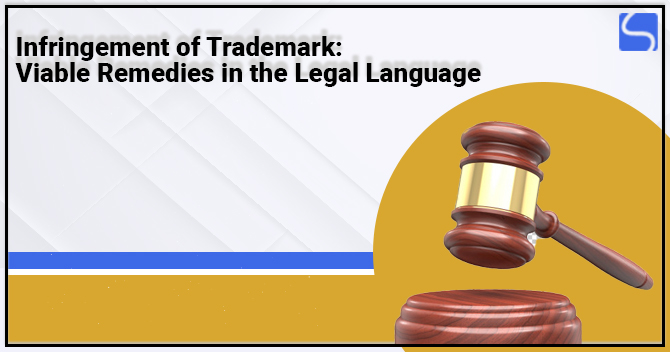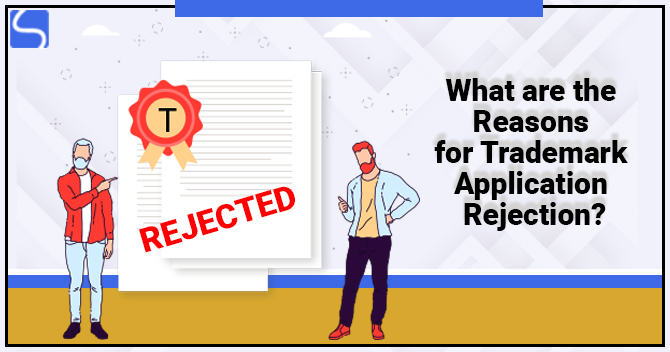Infringement of Trademark: Viable Remedies in the Legal Language

Karan Singh | Updated: Jun 01, 2021 | Category: Trademark
Infringement of Trademark is an awful crime in India. Trademark Registration enables the proprietor of Trademark to influence legal proceedings against the defaulter involved in the infringement act. This is because a Trademark provides an exclusive right to the proprietor over the use of the Trademark. However, even in the absence of Trademark Registration, some individual rights exist in a Trademark. In this article, we will shack some light on how you must proceed in the Infringement of Trademark and also we will talk about the rights of the Trademark owner.
Table of Contents
What is a Trademark Protection?
A Trademark is a crucial part of the IP or Intellectual Property[1], including an identical design, name, logo, or expression which aids to recognise products or services of a particular source from those of others. The owner of a Trademark can be an individual, any legal company, or an enterprise. A Trademark can be affixed on a label, voucher, product, or package.
Such marks are often found on the company premises for the purpose of the company’s identity. The registered mark placed its owner with exclusive rights concerning the goods and services for which it is granted. Hence, the owner of the Trademark held the right to sue the defaulter and demand compensation for the harms sustained by the infringer. The following section represents the viable course of actions that users can take in case of Infringement of Trademark.
Grounds for Suing For Infringement of Trademark
- Another business supposedly using the mark that is confusingly similar to yours mark to their goods or services;
- When the Infringement of Trademark is happened with an intention to control the registered Trademark’s reputation or for unfair advantages;
- Inequitable use of the Trademark by the offender on the packaging & label of goods/services or encouraging goods/services;
- Unique elements of the Trademark have been converted into a phonetic version, providing unfair power to the infringer;
- Wrongful demonstration of a Trademark through marketing or advertisement causing harms to the goodwill of the entity;
- When another party is supposedly using a registered mark similar to yours as part of their trading name;
- Illegal use of Trademark with the approval of the Trademark owner can also be a valid ground for litigation;
- The Infringement of Trademark is creating confusing amongst the end-users or giving a false impression regarding its connectivity with the registered Trademark.
Following acts cannot be treated as Infringement as per Trademark Act, 1999:
- A Trademark in enquiry is causing no confusion among the purchase of goods or services;
- A Trademark in enquiry is used with an authentic intention and without breaching the interest of anybody.
Sending C & D (Cease and Desist) Letters to Infringers: Your First Line of Protection
Sending C&D letters to infringers is a common practice in legal language. It is efficient in the sense that it can aid the proprietor in averts pointless and costly litigation processes. It performs as a notification demonstrating the concern of the owner concerning the Infringement of Trademark. Rectifying the drafting of such letters is vital because it may give an unfair benefit to the infringers to take lawful action against the owner of a Trademark.
Here is what you require to take into account while preparing such a letter?
- Ensure to add the correct name and recipient’s address;
- The date should be added to the letter;
- Add a clear explanation about the act of Infringement of Trademark go after by the recipient;
- Add a defined timeline for the recipient to take appropriate remedial actions to mend the losses.
The primary objective of this letter to obtain the infringer to stop the illegal act against you. Hence, it’s sensible to focus on relevant detail only instead of other things that create confusion and, most significantly, try to steak with formal language only.
Filing Petition Against the Infringer
If an infringer declines to reply to the Cease & Desist, you can visit the relevant judiciary, where your business is situated, to file the petition. An individual seeking to file a petition in court should have concrete evidence concerning the use and Trademark Registration. Hence, the certificate of Trademark Registration and the communication record present at the Trademark Registrar acts as robust evidence.
Upon the winning filing of the petition, the court can provide many remedies for the Infringement. Even before concerning conclusive judgment, the court can deliver a temporary injunction. This is usually when the Infringement is the active phase and causes significant damage to goodwill. The court might also induce the offender to reimburse for the financial damages incurred by him or her by the method of Infringement. Further, the court may also issue the judgement for destroying the goods with the offensive mark and reimburse for litigation costs.
Key Takeaway: In the world of technology, before filing a petition against the offender, an online search can aid a lot, specifically in the case of counter litigation. All other primary factors such as misleading similarity and unfair use need to be inspected.
What are the Penalties for Infringement of Trademark?
The court might order the following judgements based on criminal and civil charges:
- Goods destruction (in the case of civil charges);
- Legal proceedings cost (in the case of civil charges);
- Rs. 50,000/- to Rs. 2 lakhs of fine (in case of criminal charges);
- Permanent and temporary injection (in case of civil charges);
- Profit damages (in case of civil charges);
- Six months to three years of imprisonment (in case of criminal charges).
Conclusion
A company or an individual facing Infringement of Trademark can accept the approaches mentioned above to include the sufficient that Infringement is actual in the legal language. Sending a Cease & Desist letter is definitely a wise move, delivered you are sure adequate that Infringement is actual in the legal language. Or else, such a move can require you to face defy litigation. Filing a petition must be your last line of defence, allowing for the resources you would need to win the case.
Read our article:5 Significant Elements For A Successful Brand Name














